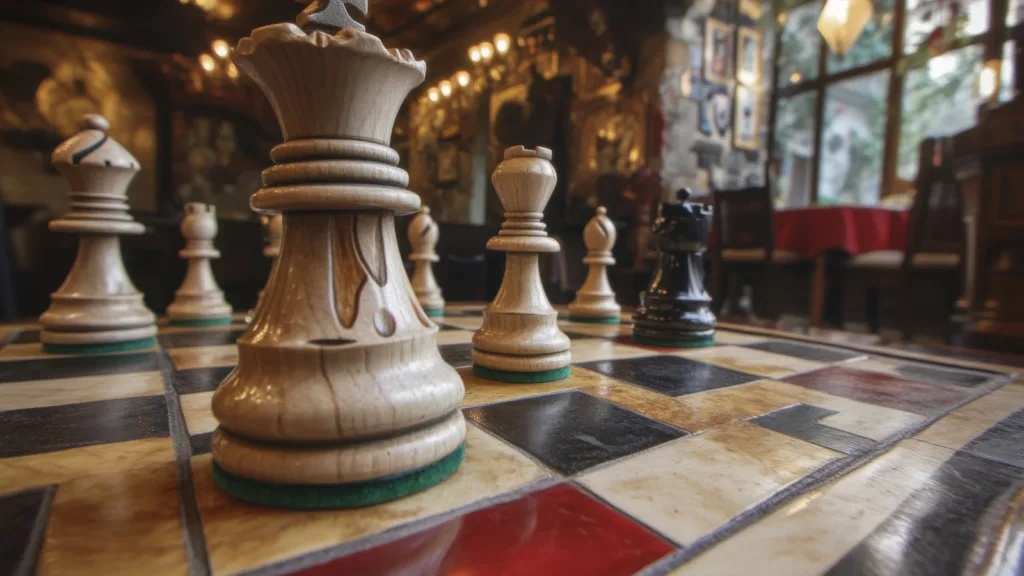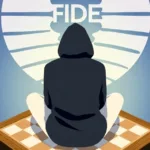If you’ve ever looked at a chessboard and wondered why a horse is called a “knight,” or why the queen is so powerful in a game from the Middle Ages, you’re not alone. The names of chess pieces, often seen as “characters” in this ancient game, have evolved across centuries and civilizations.
Let’s dive into how chess pieces were named, what they represented in earlier versions of the game, and what that tells us about the cultures that played it.
♛ The Queen: From Vizier to Empress of the Board
Modern name: Queen
Earlier names: Vizier, Firzan (Persian), Counselor, Minister
In early versions of chess from Persia (Shatranj) and India (Chaturanga), this piece was not a queen. It was the vizier – a royal advisor. The original piece moved only one square diagonally and was relatively weak.
But when chess entered medieval Europe, something changed:
- European courts already had queens as powerful figures.
- By the 15th century, during the rise of strong monarchies (and possibly influenced by real-life queens like Isabella of Castile), this humble advisor was reimagined as the Queen, the most powerful piece on the board.
This transformation gave birth to the faster, more dynamic version of chess we know today.
♔ The King: Always There, But Never Safe
Name in all cultures: King or Shah (Persian)
The king has always represented the core of the game. In fact, the word “checkmate” comes from Persian “Shāh Māt,” meaning “the king is helpless.”
Interestingly, while the king’s role stayed constant, its movement changed very little. Across most historical versions of chess, the king moves one square in any direction, always vulnerable, always under threat.
♞ The Knight: War Horse of Every Age
Modern name: Knight
Earlier names: Horse (in India, Persia, China), Rider, Cavalier
In Indian Chaturanga, this piece was literally the horseman. The horse shape on the modern knight is a direct holdover from that.
In many languages today, the knight is still just “horse”:
- French: Cavalier
- Spanish: Caballo
- Chinese (Xiangqi): Mǎ (马), which means horse
Its unique L-shape move has remained unchanged for over a thousand years.
♝ The Bishop: An Elephant in Disguise
Modern name: Bishop
Earlier names: Elephant (India, Persia), Archer, Sage
The bishop’s current name and symbol are a European invention. In Chaturanga, it was an elephant, one of the four divisions of the ancient Indian army. Even in Shatranj, the piece was called “fil” (elephant) and moved two squares diagonally, jumping over intervening pieces.
When chess spread to Europe:
- The elephant was not a familiar animal.
- The piece evolved into different identities:
- Italians: Alfiere (standard bearer)
- Germans: Läufer (runner)
- English: Bishop (possibly due to the piece’s mitre-like top)
Today, the bishop is a symbol of diagonal power, but its roots lie in a royal elephant charging across the battlefield.
♜ The Rook: From Chariot to Castle
Modern name: Rook
Earlier names: Chariot, Ratha (Sanskrit), Rukh (Persian for chariot or war wagon)
This piece began as a war chariot in Chaturanga. The Sanskrit word “Ratha” means chariot, which became “Rokh” or “Rukh” in Persian. Over time, Europeans interpreted the word phonetically and began drawing the piece as a castle or tower, possibly because it sounded like “rook,” and the image fit the game’s medieval flavor.
So today’s rook, with its fortress-like appearance, is actually a heavily armed chariot beneath the surface.
♟ The Pawn: Foot Soldier with Big Dreams
Modern name: Pawn
Earlier names: Padàti (foot soldier in Sanskrit), Piade (Italian), Peón (Spanish)
The pawn has always represented the lowest-ranking soldiers – infantry, peasantry, or commoners. In Chaturanga, it was called Padàti (foot soldier). That term survived in many languages, often referring to manual laborers or peasants.
What’s fascinating is that pawns can promote to a queen (or any piece) upon reaching the far side. In a way, the pawn’s story mirrors that of a commoner rising to royalty, a powerful metaphor that remains a unique feature in chess.
Chess as a Cultural Mirror
The names of the chess pieces, “characters” in this royal game, reflect how different cultures saw the world:
- India and Persia built chess around war strategy: elephants, chariots, cavalry.
- Europe transformed chess into a game of monarchy, religion, and nobility: kings, queens, bishops.
- China adapted it into Xiangqi, with generals, cannons, and advisors.
- Japan’s Shogi uses pieces like lances, silver generals, and gold generals, again showing a unique cultural flavor.
So when you call a piece “bishop” or “rook,” you’re not just naming a chess character. You’re repeating centuries of human history.

I’m Xuan Binh, the founder of Attacking Chess, and the Deputy Head of Communications at the Vietnam Chess Federation (VCF). My chess.com and lichess rating is above 2300, in both blitz and bullet. Follow me on Twitter (X).







1 thought on “The Names of Chess Characters Through History and Cultures”
Comments are closed.